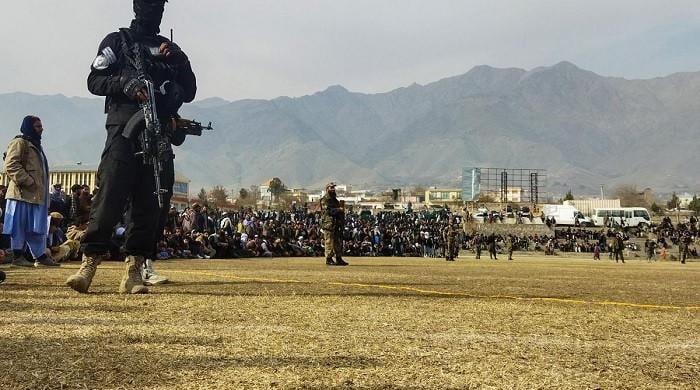Four individuals faced public execution in Afghanistan on Friday, as confirmed by the Supreme Court. This marks the highest number of executions in a single day since the Taliban’s resurgence.
The executions, which occurred at sports stadiums across three provinces, bring the total number of publicly executed men to ten since 2021, based on an count.
During the Taliban’s initial governance from 1996 to 2001, public executions were a frequent occurrence, often taking place in sports stadiums.
In Qala-i-Naw, the capital of Badghis province, two men were shot multiple times by a male relative of their victims in the presence of onlookers.
Mohammad Iqbal Rahimyar, a 48-year-old spectator, recounted that the condemned men were seated with their backs turned, and relatives of the victims carried out the shootings.
According to a statement from the Supreme Court, these men were subjected to “retaliatory punishment” for fatally shooting others. Their cases underwent thorough and repeated examination.
The court noted that the victims’ families declined the opportunity to grant amnesty to the men.
Zabihullah, a 35-year-old man present outside the stadium, remarked that while forgiveness would have been preferable, the implementation of God’s order is paramount.
Official notices were widely circulated on Thursday, inviting Afghans to “attend the event.”
The Supreme Court also reported that a third man was executed in Zaranj, Nimroz province, and a fourth in Farah city, located in the western province of Farah.
Javid, another spectator, expressed his satisfaction with the Taliban government’s display of “politics and force.”
Amnesty International has urged the Taliban to cease public executions, denouncing them as a “gross affront to human dignity.”
The previous execution occurred in November 2024, where a convicted murderer was shot by a family member of the victim in front of thousands of spectators, including high-ranking Taliban officials, in Gardez.
Corporal punishment, primarily flogging, has been a common practice under the Taliban’s rule, used for offenses such as theft, adultery, and alcohol consumption.
All execution orders require the approval of the Taliban’s Supreme Leader, Hibatullah Akhundzada.
In 2022, Akhundzada mandated judges to fully enforce the Taliban government’s interpretation of Islamic law, including “eye-for-an-eye” punishments (qisas) that permit the death penalty for murder.
The establishment of law and order is central to the Taliban’s ideology, which emerged from the civil war following the withdrawal of Soviet forces in 1989.
A notable image from their past rule is the 1999 execution of a woman in a Kabul stadium, accused of killing her husband.
The United Nations and human rights organizations, including Amnesty International, have condemned the Taliban’s use of corporal punishment and the death penalty.
Amnesty International’s annual report on death sentences included Afghanistan among countries where death sentences were imposed after trials that did not meet international standards.
In 2024, 1,518 executions were recorded worldwide, excluding the thousands believed to have been carried out in China.



Comments (0)
No comments yet. Be the first to comment!
Leave a Comment